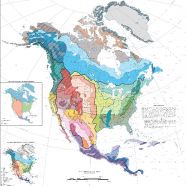
Ecoregions of North America prepared by Robert Bailey of the US Department of Agriculture, Forest Service.
Share This
Print This
Email This
Ecological Maps of the Heart-Mind for the Grounded Global Southerner
A true Southerner has a map in his or her heart-mind. How many of these “true Southerners” are there now? Or does it matter, for the map is embedded not in an individual but in a culture. This piece focuses on new ecological maps for the heart and mind as the US South finds grounding for the future.
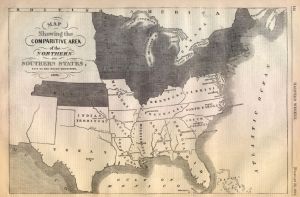
Map of the Southern States in Harper’s Weekly, February 23, 1861, available here, accessed July 14, 2016. While Missouri and Kentucky were claimed by the Confederate States of America they were never under its effective control. In 1862, West Virginia separated from Virginia and joined the Union.
A map is a symbolic representation, most commonly in two dimensions, of spatial relationships. A sequence of maps may also signify temporal relationships. Symbolic representation, however, is the key element. A map conveys more than factual knowledge. It situates the observer in those relationships, induces relationships both cognitive and affective in the observer, and may lead to action. Indeed, a cartographer is a student of human behavior and seeks to bring about action on the information presented.
That maps affect the heart and mind is evident to Southerners. Born in the forties, I learned early that I was from the South, a certain geography. That made me a Southerner and from this many things followed. While I lived outside the South in my twenties and thirties, I was relieved that both of my children were born in the South. But because they mainly grew up in Denver and live there now, I don’t know how much being from the South means to them. I do know, however, that they grow collards in their yards and when they prepare a celebratory meal they often cook traditional Southern dishes.
When I grew up, “the South” was an unambiguous term. For me, being from the South meant one thing and only one thing, you were from one of the former Confederate States and you held certain cultural values . . . or so it seemed. Now the South also refers to the Global South and we speak of people of the North and of the South with different meanings. There is an irony to this because old Southerners will recognize the attribution of poverty and backwardness applied to the Global South that was once applied to the US South and still is to a degree.
The possibility of identification by US Southerners with global Southerners was presented by C. Vann Woodward in The Burden of Southern History (first published in 1960). He wrote of the legend of American success and victory: Americans in this legend were able to meet every challenge, domestic and foreign, through skill, luck and pluck, and triumph, and its armed forces were invincible. The same could not be said of the US South:
For the inescapable facts of history were that the South had repeatedly met with frustration and failure. It had learned what it was to be faced with economic, social, and political problems that refused to yield to all the ingenuity, patience, and intelligence that a people could bring to bear upon them. It had learned to accommodate itself to conditions that it swore it would never accept, and it had learned the taste left in the mouth by the swallowing of one’s own words. It had learned to live for long decades in quite unAmerican poverty, and it had learned the equally unAmerican lesson of submission. For the South had undergone an experience that it could share with no other part of America—though it is shared by nearly all the peoples of Europe and Asia [(and Africa and Latin America?)]—the experience of military defeat, occupation, and reconstruction.1
In part due to this, James Peacock wrote that the US South has the possibility of “grounded globalism.”2 “As scholars Michael O’Brien, C. Vann Woodward, Jon Smith, Deborah Cohn, and others have noted, the South’s history of defeat and colonization binds it with other Souths—with virtually everywhere, including Europe, that has also suffered.”3
Peacock’s thesis of grounded globalism, however, went beyond the possibility of a sympathetic relationship between US Southerners and other peoples of the world. He saw globalism as transforming the identity of US Southerners from an oppositional identity to the remainder of the United States, to fellow travelers with other Americans in a global society. Further, he saw a US South that was being transformed internally by the presence of the globe in its midst—for example the black-white divide was being changed by the many foreign nationals who have now immigrated to the US South, especially Hispanics but also many people from other places and cultures. Finally, he saw the strong regional identification of US Southerners in its transformed state entering into globalism and providing a model of grounding for it. Instead of an abstract globalism with mythic benefits or demons, the grounded global Southerner takes on a global identity with attention to history, tradition, and place.
Peacock, in his own life and work, exemplifies what it means to be a grounded global Southerner. I believe I too am such a person. Grounded Globalism helps me understand the Southern influences in my life that have made my own approach to the issues of globalism regionally distinctive. The first time I lived outside the South was when I attended graduate school at Stanford University. I was conscious of some difference in my responses based on my Southern upbringing from my Northern (in other words, everyone who wasn’t from the South) classmates as I wrestled with the Vietnam War and other issues of the sixties. Both sides of my family go back hundreds of years in North Carolina and both of my grandparents were North Carolina farmers. My father taught agriculture economics at the University of Florida. We were always conscious of history, tradition, and place.
Another such person, Thomas Berry (1914–2009), serves as a segue to my discussion of ecological maps of the heart-mind. He was born and grew up in Greensboro, North Carolina, a town of 15,000 in his youth. He was one of thirteen children in a Catholic family. Being from such a family was not characteristically Southern at that time. Nor did he have an agrarian background, but his Southern roots were apparent to those who knew him. His father worked as a clerk for the Southern Railroad and later started a residential coal delivery business that eventually became Berry Oil Company. While Berry participated in this business, sometimes selling buckets of coal door-to-door, his heart was somewhere else—in religion, culture, and, while he didn’t use the term when he was young, ecology. He entered the Passionist religious order and obtained a PhD in history from Catholic University. As a historian of cultures and religions, he taught at Seton Hall University, St. John’s University, and Fordham University. He was the most widely read and historically knowledgeable person I have ever met. He had a personal library of 10,000 books covering cultures and religions from around the world.
Berry had an affinity for the natural world throughout his life, but the ecological work for which he is known began late in life. He wrote books on religion during his teaching years, but the book that brought him to a wide audience, The Dream of the Earth, was not published until he was seventy-four. Two other books for which he is widely known, The Universe Story and The Great Work, were published when he was eighty and eighty-five respectively. If history, tradition, and place are hallmarks of being Southern, rarely have they been more in evidence than in the later works of Thomas Berry. They are portrayed, however, in his works in the way that Peacock writes of grounded globalism. Berry transmuted his Southern consciousness of history, tradition, and place into a consciousness of the roles these play for the various peoples of the world.
In his transmutation from the South to the globe, he also altered the meaning of history, tradition, and place. All became grounded in the evolutionary processes of Earth and even beyond that of the universe. The cosmogonic myth and cosmology, so crucial to the history of cultures and religions, but of little relevance to the modern mind, became newly alive in Berry’s work. Our tie to this primordial evolutionary process became our not-so-stable, ever-evolving ground to which we were not only externally but also internally and intimately related. He wrote of a spirituality of Earth and how this had informed all cultures and religions.
The recovery of this sense of a close relationship with Earth (our ground) but in a new evolutionary understanding was the heart of his work. He undertook it with a great urgency because Earth was in crisis due to the loss of our grounding in it. In his chapter titled “Ecological Geography” in The Great Work, Berry discussed how all biological species other than humans are tied to biological niches. They have some capacities for shaping their environments, but live within controlled limits due to their dependence on surrounding supporting and opposing species and life systems. They are necessarily geographically located.
Humans by contrast are genetically coded to a transgenetic cultural coding and it is by this that humans establish their relations to geography and other modes of being and pass this on to future generations through education. The kind of intelligence granted to humans gives them a degree of freedom to expand their habitat regions more widely than other species. The ability to do this increased greatly with the cultivation of land and the confining of animals. Humans succeeded in new regions both by gaining knowledge of existing geographies and life systems and by self-creating geographies and life systems.
For millennia, agriculture and the tenacity of nature required of humans an intimate knowledge of place and a reverent respect for it. In the industrial period this changed. Earth came to be understood as existing for utilitarian purposes. Human achievement “came to be judged by the extent of control over the geological structures, the vegetation, and the wildlife-forms in the region and their use for human purposes.”4 The land became “property” for human use and exploitation. Limits became goals to be surpassed. The knowledge of place, once so necessary for human development, became tenuous. The whole globe became the source of supply, and outer space absurdly beckoned as a future resource pool and dwelling place for humans beyond the limits of Earth itself.
The general theme of Berry’s chapter on ecological geography was that humans are grounded here on Earth and must become self-limiting. While place is shaped by historical, geological, and biological processes that are endless, place is limited, both this place (the region in which one lives) and Earth as a whole. What is needed is an integral ecology, one that brings an understanding of “the integral functioning of Earth: geology, chemistry, biology and those other studies of Earth and its manner of functioning.”5 This is needed not to present Earth as existing for the human, but to “identify the role of the human in relation to the other components of the planet.”6 In this integral ecology the question becomes not what do we want Earth to be but what does Earth want us to be in order to ensure the functioning of its life systems and the flourishing of life on which we are utterly dependent and by which we are in fact limited?
“Geography,” Berry writes, “is an integrating study of the Earth in its comprehensive extent as well as in its various regional integrations.”7 It draws on the social, biological, and physical sciences. He further states, “While geography provides a comprehensive context for understanding the function of the Earth in its larger structure, it is even more useful in appreciating the integral functioning of the various regions into which the planet is divided. In this manner it provides the context for ecological understanding.”8
Cartography, now joined by geographic information systems, is one of geography’s most important techniques for transmitting information. We are familiar with maps locating human features . . . our roads, our states, our towns; or maps as tools . . . oil exploration maps, navigation maps, weather maps; or as representations of nature . . . terrain, elevation, rivers and seas, currents, species distributions. These maps, like the geographical studies that have given rise to them, have been prepared largely from the perspective of what is useful to humans or satisfies human curiosity. If we were to take Berry’s perspective on geography, what maps would we draw to study Earth for Earth’s sake and to understand the human place in the Earth community?
Berry suggests a first step is to understand ourselves in the context of bioregions. A “bioregion” is a naturally occurring geographic division of Earth that contains an interacting community of life functioning as a relatively self-supporting system within the ever-renewing processes of nature. A more colloquial way of stating this is that bioregions or ecoregions are the way nature sustains itself in various regions.
Below is a map of the bioregions of North America prepared by Robert Bailey of the US Department of Agriculture, Forest Service.9
The following is a map of the bioregions of North Carolina prepared as a collaborative work of the US Environmental Protection Agency, the US Department of Agriculture, the Natural Resources Conservation Service, and the North Carolina Department of Environment and Natural Resources.10
Ecological maps can also show changes that are likely to occur in a region. This map from the EPA shows the projected increase in 950+ days in the US Southeast in 2041–2070 as compared with 1971–2000.11
This map from the EPA shows areas of the US Southeast that are vulnerable to sea level rise.12
My mother was born and raised in Hyde County, North Carolina. The “Surging Seas Sea Level Rise Analysis” prepared by Climate Central predicts that 87,816 of its 130,319 acres are less than three feet above sea level and would be affected by a three-foot sea level rise.13 I know well the frequent flooding in that area from storm surge and I wonder if my ancestral home will be underwater by the end of this century.
These ecological maps affect our heart-mind. We want to know, not simply Earth, but Gaia, our mother. We want to know how Earth has affected us, and we also want to know how we are affecting Earth. I experience a certain terror looking at these maps. I wonder if you do as well.
We have entered the Anthropocene epoch even if not yet officially recognized by the international geographical bodies. Humans have become a geological as well as a biological force. So if US Southerners are to be globally grounded, we, too, need maps in our heart-mind of human presence.
Below is a map of the world in scale according to human population.14
Astonishingly, the following map shows that there are more people living in the geographies within the highlighted circle than outside of it.15
Below is a map of the world based on human population growth between 1990 and 2010.16
The chart below illustrates the most recent (2015) population projections by the UN Population Division showing that world population will surpass 11 billion people by the end of the twenty-first century.17
Where those people are likely to reside, according to the same UN Population Division report, closely matches the cartogram above on population growth between 1995 and 2010.
And this is all happening when the Global [Ecological] Footprint Network calculates that humans are already living at 1.5 times the carrying capacity of Earth,18 and the International Geosphere-Biosphere Programme calculates the great acceleration in human impact on Earth that began in the mid-twentieth century continues today.19 Thus human impact is growing even faster than human population. So, where are those other Earths to come from?
To conclude, being globally grounded doesn’t necessarily mean being comfortable, but it definitely has its advantages over the alternative. I believe the US South does have in its heritage an important and distinctive link to history, tradition, and place that it can give to the world; and it has experiences that enable people of the US South humbly to identify with the Global South (extending the meaning of this term beyond a certain region of Earth).
We need a realistic picture of the world. Our heart-mind maps need to be attuned to what that is. The US South has suffered hardship before and we have triumphed. Our ecological maps of the heart-mind can give new meaning to our enduring hope that “the South shall rise again!”
Notes:
- C. Vann Woodward, The Burden of Southern History, 3rd ed. (Baton Rouge: Louisiana State University Press, 1993), 190.
- James L. Peacock, Grounded Globalism: How the U.S. South Embraces the World (Athens: University of Georgia Press, 2007).
- Ibid., 174.
- Thomas Berry, The Great Work: Our Way into the Future (New York: Bell Tower, 1999), 88.
- Ibid., 90.
- Ibid, 91.
- Ibid., 186.
- Ibid., 86.
- http://www.fs.fed.us/rm/ecoregions/products/map-ecoregions-north-america/, accessed July 17, 2016.
- ftp://newftp.epa.gov/EPADataCommons/ORD/Ecoregions/nc/nc_eco.pdf, accessed July 17, 2016.
- https://www3.epa.gov/climatechange/impacts/southeast.html, accessed July 17, 2016.
- Ibid.
- http://ssrf.climatecentral.org/#location=NC_CD_3703&state=North+Carolina&level=3&category=Protected&geo=County&pt=t&target=&p=S&protection=tidelthresh&folder=Protected+lands+by+area, accessed July 17, 2016.
- http://www.worldmapper.org/display.php?selected=2, accessed July 17, 2016.
- http://brilliantmaps.com/population-circle/, accessed July 17, 2016.
- http://www.viewsoftheworld.net/?p=1853, accessed July 17, 2016. Map created by Benjamin Hennig, Senior Research Fellow in the School of Geography and the Environment at the University of Oxford.
- http://news.nationalgeographic.com/news/2014/09/140918-population-global-united-nations-2100-boom-africa/, July 17, 2016. This is a rendering by the National Geographic Society of a chart presented in United Nations Department of Economic and Social Affairs, Population Division, World Population Prospects the 2015 Revision: Key Findings and Advance Tables (New York: United Nations, 2015), 2, https://esa.un.org/unpd/wpp/Publications/Files/Key_Findings_WPP_2015.pdf, July 17, 2016.
- http://www.footprintnetwork.org/en/index.php/GFN/page/footprint_basics_overview/, accessed July 18, 2016. The explanation commonly given for how it is possible to live beyond Earth’s means is to use the analogy of living off of a sum of money where a person spends more than current income each year and goes into principal. For a while this works, but later all the money is gone. Living beyond Earth’s means thus means that humans are consuming and dumping more each year than the Earth can restore.
- http://www.igbp.net/globalchange/greatacceleration.4.1b8ae20512db692f2a680001630.html, accessed July 18, 2016.







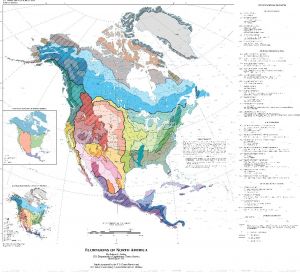
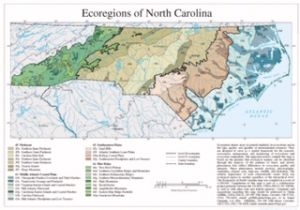
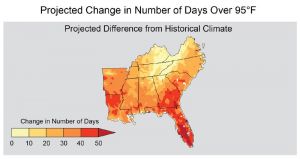
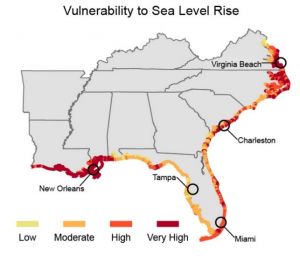
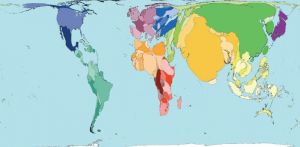
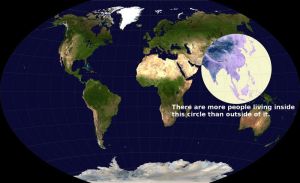

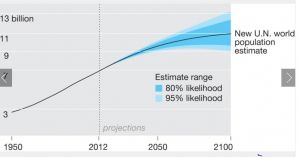
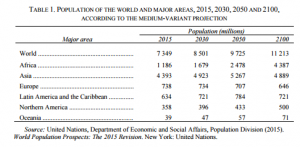
Years back, i recall a radio program that suggested country music carried the historic legacy and themes of ancient Greek drama. Seems related to what might be a cultural gift of the US South to carry forward. Spunky, busy undefeatedness is likely not helpful, nor hand wringing desolateness . . .
Is there a practical book on bioregional living?